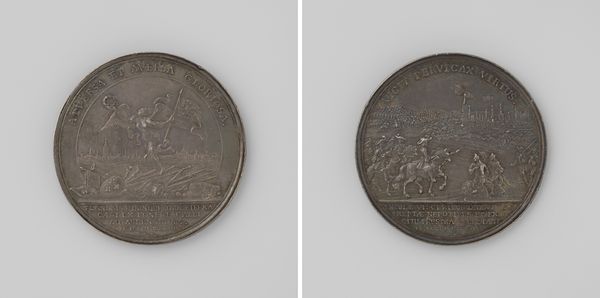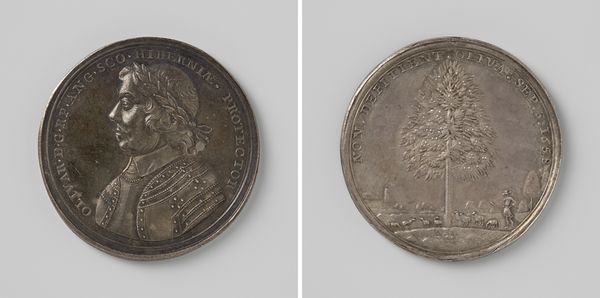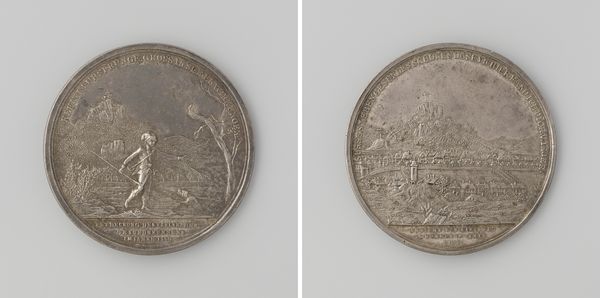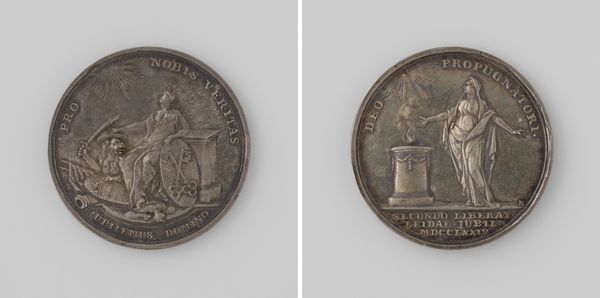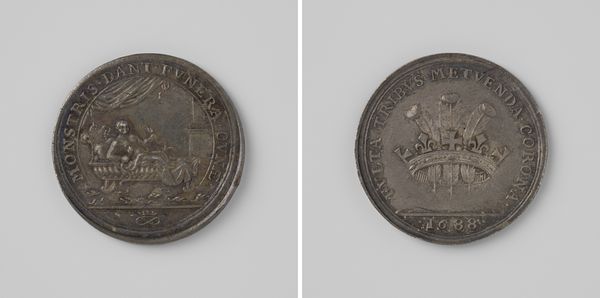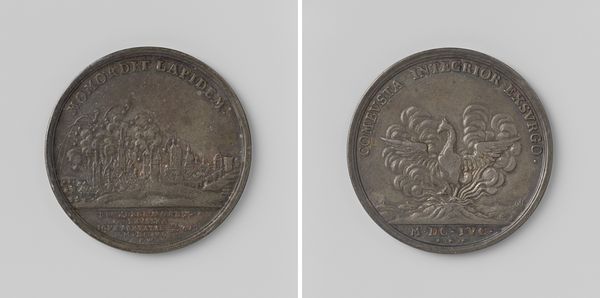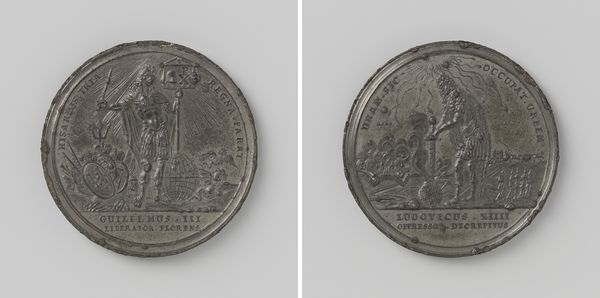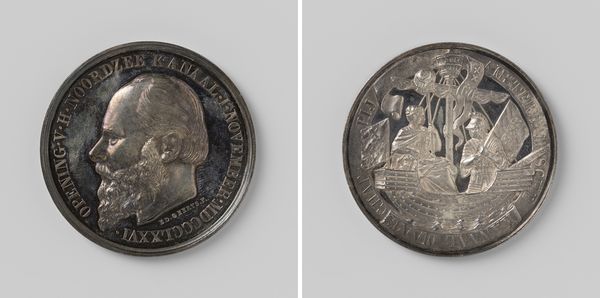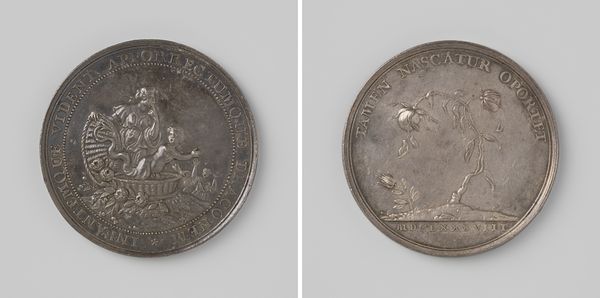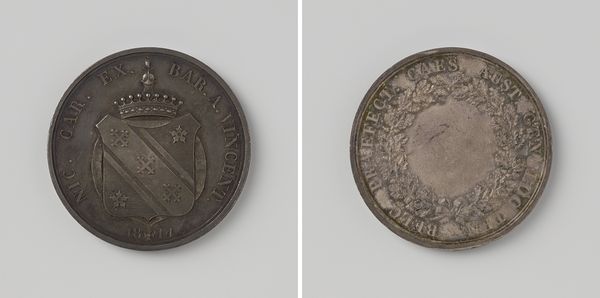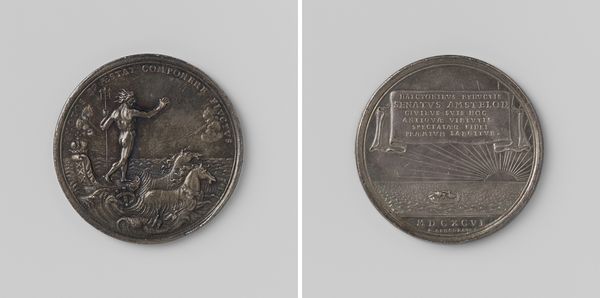
metal, relief, sculpture
#
neoclacissism
#
metal
#
sculpture
#
relief
#
ancient-mediterranean
#
sculpture
#
history-painting
#
statue
Dimensions: diameter 4.6 cm, weight 42.43 gr
Copyright: Rijks Museum: Open Domain
Editor: This is a metal relief sculpture called *Vrede van Teschen*, or "Peace of Teschen" created in 1779 by Johan Friedrich Stieler. It's circular, like a coin. At first glance, it reminds me of ancient Roman coins that often celebrated historical events. What do you see in this piece? Curator: Well, it does have that classical feel, doesn't it? Like finding an old coin in your grandfather's drawer. The Neoclassical style Stieler employed was all about harking back to that imagined, pure past of Greece and Rome, full of noble deeds cast in bronze...or metal, in this case! This piece commemorates a treaty. I wonder what that treaty aimed to solve. The symbolism in the relief seems so deliberately placed. Have you noticed the ruined objects in the lower part of the composition? Editor: Now that you mention it, those broken weapons and flags do suggest conflict! So, this wasn’t just a "peace," but the *end* of a conflict. Perhaps the coin, the monument, all speak of lasting peace, reborn civilization? Curator: Exactly! And consider that these kinds of medals were often commissioned by rulers to cement their image. What could be better than being seen as a peacemaker, restoring order like a good Roman Emperor? This is way more than just art, but history being shaped in metal. What do you think? Does it sell the peace? Editor: Definitely food for thought! I hadn’t considered how commemorative art also serves as a form of… propaganda? It highlights the need to really read beneath the surface and try to understand its purpose, as well as its design. Curator: That’s precisely the exciting, intricate work of art history!
Comments
No comments
Be the first to comment and join the conversation on the ultimate creative platform.
